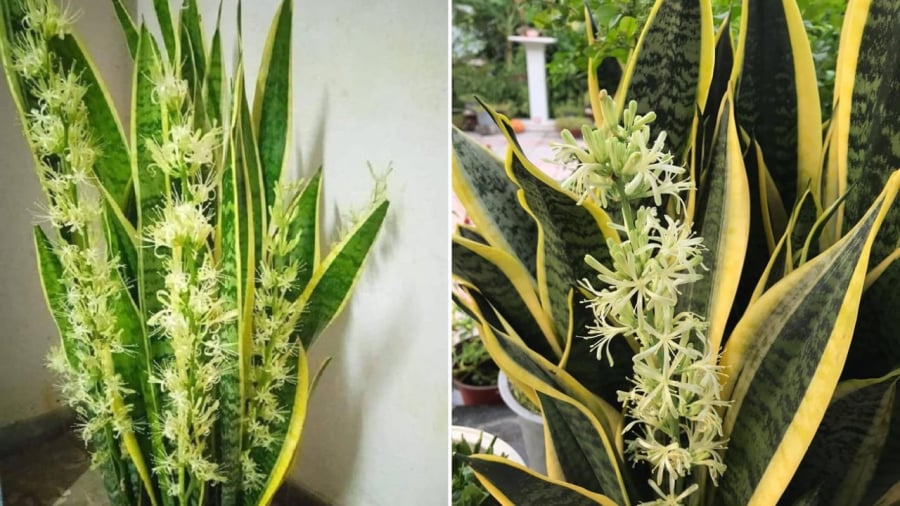The Snake Plant is a fairly easy-to-grow houseplant. You can propagate it by stem cuttings, and it can be grown in soil or water. This plant thrives both outdoors and indoors. It is low-maintenance and drought-tolerant. However, if neglected, it will not bloom.
In feng shui, a blooming Snake Plant is considered auspicious, bringing good fortune and prosperity to the household. It typically flowers between September and February.
Snake Plants fall into the category of hard-to-bloom houseplants. However, with proper care, they can produce an abundance of flowers. Some varieties boast white, fragrant blooms reminiscent of lavender, while others bear red flowers. Interestingly, Snake Plant flowers grow directly from the root.
These blooms are relatively long-lasting, with a lifespan of several weeks to a month.
The Feng Shui Significance of a Blooming Snake Plant
In the context of feng shui, Snake Plants are believed to ward off negative energies and protect the home. Their presence invites good luck and abundance.
A flowering Snake Plant is seen as a positive omen, symbolizing prosperity and the renewal of energy. Since blooming is a rare occurrence for this plant, it is highly valued when it happens.
How to Encourage Your Snake Plant to Flower
- Light
Position your Snake Plant in a spot that receives sunlight. Lack of sunlight will hinder its ability to photosynthesize, causing the leaves to lose their vibrancy, and making it challenging for the plant to flower. If kept indoors, place it near a window or balcony to maximize natural light exposure.
Avoid prolonged periods of shade, and ensure the plant receives at least 3-4 hours of daily sunlight.
- Watering
The golden period for promoting the growth of your Snake Plant is when it is establishing its roots. Use well-aerated, porous soil with good drainage. As Snake Plants are not water-demanding, frequent watering is unnecessary. Overwatering can lead to root rot, so exercise caution. During rainy seasons or colder months, reduce watering to once a month, or check the soil moisture before watering.
When watering, provide a moderate amount of water without overdoing it.

- Fertilizing
Snake Plants do not require excessive fertilization. You can fertilize them once a month during spring and summer—their active growing seasons—using a potash-rich fertilizer, or opt for mineral or manure fertilizers.
In the spring, when the roots are vigorously growing and occupying more space in the pot, consider repotting into separate, smaller pots or a larger one to accommodate their expanding root system.
- Pruning
Prune away any damaged or wilted stems to allow the plant to focus its energy on healthy growth. After flowering, remove the faded blooms to encourage the plant to channel its energy into regenerating and producing new flowers.
- Age of the Snake Plant
Younger Snake Plants are less likely to flower. Older plants, those a few years of age, have a higher propensity for blooming.
By heeding these care tips, you can enhance the health and vitality of your Snake Plant, increasing the chances of witnessing its beautiful blooms.






























